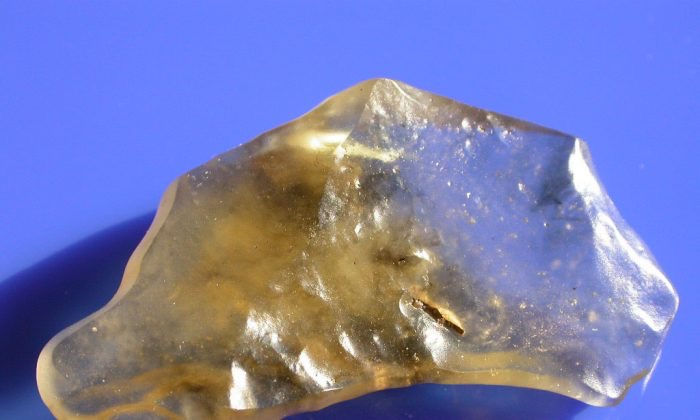Has the Function of the Great Pyramid of Giza Finally Come to Light?
- skloucherepierre
- Jan 15, 2021
- 7 min read

Around 150 years after the foundation of Egyptology as a scholastic field, there still has all the earmarks of being no arrangement between researchers on the capacity of the Great Pyramid of Giza. However a few distinct theories have been proposed. The burial chamber speculation showed up when examination started on the pyramid, with a prevalent view saying the essential capacity of the pyramid was to be the last resting place for the second leader of the fourth administration - Khufu.
Other contending speculations were proposed also: the storehouse, the force to be reckoned with, paradise's mirror, water siphon, and the Orion belt , among others. Checking on all the primary theories with a receptive outlook I arrived at resolution that I can't concur with any of those, so I propose my own. Certain parts of the theory were at that point voiced by others yet not sufficiently validated. I attempted to fill the holes where required with extra realities and proof.
It is notable that the Great Pyramid is situated at the most extreme geological focus of Earth (or near it). No proposed theory will in general clarify why - generally will in general overlook this reality or minimize it. In the event that the pyramid is surely worked as a burial place, how did Khufu wind up picking the area for the burial place to be at, or near, the topographical focus of Earth? With the pyramid development assessed at 20 years, is planning and graphing the planet considered into the pyramid development time?
How since quite a while ago did it take Khufu to overview the planet to establish that area? Essentially, how did the storage facility or stalwart end up at the focal point of Earth and why? All the proposed speculations do not have a clarification for this significant angle, and without question it is basic in understanding the capacity of the Great Pyramid of Giza .
The Pyramid as a Source of Light
Light can be made by any framework on the off chance that it can radiate charged particles into the ionosphere. The Aurora Borealis is the marvels brought about by similar cycle in which where electrons made by the sun slam into air atoms to make light. All in all, what might it take for the Great Pyramid of Giza to make comparative light?
To start with, we should discuss the development material utilized in the Great Pyramid of Giza. On the off chance that in the old past somebody chose to fabricate a framework to transmit electrons and make light, the individual would confront a situation with the decision of development materials. To achieve that objective, high conductivity material at high recurrence is required. Copper has brilliant conductivity and we realize Ancient Egyptians had it in their tool kit, however at high recurrence copper would overheat and soften inside a couple of moments. What different materials could be utilized?
Nummulitic limestone from the Abu Rawash territory was examined by the National Research Center of Cairo. It was discovered its conductance improves at higher recurrence - to where it is extraordinary. On the off chance that the conductivity of a material should be around 600 Tera Hz, notwithstanding fundamentally solid, there couldn't be preferred material over limestone.
The Great Pyramid is situated at the topographical focus of Earth , as seen by Charles Smyth and announced in this book "Our Inheritance in the Great Pyramid" in 1864. The way that the geological focal point of Earth is at the area of the Great Pyramid is alarming.
Presently, for a structure to emanate high recurrence radiation (which is truly light), it should be encircled by a huge land mass. This is the central necessity for frameworks emanating electromagnetic radiation , of which any radio wire configuration engineer knows. On the off chance that the pyramid needs to discharge electromagnetic radiation on a size of the entire planet, the greatest land mass area is ideal!
The Great Pyramid is situated at the topographical focus of Earth , as seen by Charles Smyth and announced in this book "Our Inheritance in the Great Pyramid" in 1864. The way that the geological focal point of Earth is at the area of the Great Pyramid is alarming.
Presently, for a structure to emanate high recurrence radiation (which is truly light), it should be encircled by a huge land mass. This is the central necessity for frameworks emanating electromagnetic radiation , of which any radio wire configuration engineer knows. On the off chance that the pyramid needs to discharge electromagnetic radiation on a size of the entire planet, the greatest land mass area is ideal!
As the electrons approach the Giza level, they would go through caverns loaded up with water. The finding of the caverns was accounted for by Andrew Collins and Dr. Hawass. Another cycle occurred there known as electrolysis, causing water particles to part into hydrogen and oxygen gas. The gas blend filling the caverns caused gaseous tension development on the bed rock, making earth shuddering and commotion. It is intriguing to take note of that the Pyramid Text has different references to tremors and shudders.
The Function of the Great Pyramid of Giza
The Great Pyramid of Giza has a few chambers, shafts, and passages. Each of the elements played an important role in producing light. I provide a description of the functions of the main components in the system below.
Subterranean Chamber
The capacity of the underground chamber was to part water particles into oxygen and hydrogen gas. For that you need to have water, terminals, and voltage. Hydrogen would amass around one voltage terminal (cathode) and oxygen would be around the other terminal (anode), yet just hydrogen is required for light, so oxygen should be dismissed from the framework. The front perspective on the underground chamber shows two slopes made of limestone - those are two essential terminals.
The top perspective on the chamber shows a few likenesses between the terminals: the two terminal bases are about similar size and the division between the two levels is actually focused. This focuses to shrewd plan of the underground chamber. You can likewise see a few contrasts which are purposeful.
Note that the terminal on the left has a more extensive zone contrasted with the terminal on the right. This implies more electrons would go through the terminal on the left side than right terminal. This would cause a voltage potential where negative is on the correct side, with the hydrogen gas collecting there, and oxygen is on the left. Additionally, you can see that the left and right shafts leaving the underground chamber are not leveled.
Hydrogen gas being lighter than the air, it would exit to one side and pass toward the rising section. Oxygen gas is heavier than air and would will in general gather at the lower part of the chamber. The stone square on the floor at the correct shaft would forestall oxygen going through. Some blend would pass along, however it would not reason ignition. The gas worked in the caverns came out from the floor pit. This was not a consistent cycle of gas and water gradually spilling out; it was a cycle of gas and water impacting out of the pit with high pressing factor.
The Queen’s Chamber
For the pyramid to make light, free electrons are required, and hydrogen was utilized for that. To get electrons from hydrogen it very well may be pressurized, exposed to high voltage, or hit with EM radiation. Every one of the three cycles were utilized in the pyramid. As the gaseous tension in the underground chamber expanded, the hydrogen gas got pressurized in the Queen's chamber - filling the southern and northern shafts. The shafts are obstructed by Gantenbrinks entryways, so it remained there.
With tension building, the temperature of the gas expanded, and fractional arrival of electrons occurred. There are copper terminals in the ways to channel the EM radiation of stars into the framework. Those line up with the shafts. The arrangement shouldn't be awesome, barely for X and gamma beams (which can go through the blockage) to arrive at the copper. At that point the ionization of hydrogen occurred.
The King’s Chamber
The motivation behind the King's chamber was to gather all free electrons delivered in the Queen's chamber and push those toward the highest point of the pyramid. The stone shafts in the King's chamber are made of red rock, which has high gem content when presented to vibration and makes an electric field, pulling electrons from the Queens' chamber toward the pinnacle of the pyramid.
Waiting room and Portcullis
The capacity of the portcullis in the vestibule was to control the hydrogen gas stream toward the King's chamber and control pressure in the pyramid. Basically, shutting those would forestall the gas streaming out of the pyramid through the King's chamber shafts. Controlling how much the portcullis shut, somebody would likewise control pressure in the Queen's chamber and how much light the pyramid would create.
A Coffer in the King's Chamber
The coffer in the King's chamber is a significant component. What it was utilized for and for what reason was it put there are questions that actually puzzle numerous researchers. The reason for the coffer was to make high voltage in the King's chamber to ionize the hydrogen and make that space conductive. Without a high voltage source in the chamber, the pyramid would not work. A gadget like the Baghdad battery might have been utilized. Or then again a gadget comparable in development to the Ark of the Covenant would likewise work.
Rising Passage Plugs
There are three stone plugs in the base part of the rising entry. It shows up the common number of conversations uphold the hypothesis that those were slid down to impede the passageway to the climbing entry and were held there with wooden shafts. There is, be that as it may, no concurrence on the capacity of those fittings.
I accept those were utilized to close down the pyramid at any moment if necessary. It filled in as a crisis stop. The three rock sections would be slid down the slipping entry to impede hydrogen going through and shut down the cycle. The way that those attachments are impeding the entry currently implies they were utilized in any event once.
In this manner, I propose the capacity of the Great Pyramid of Giza was to emanate free electrons to the Ionosphere, with the reason to make light on the planet . The hydrogen gas delivered in the underground chamber was utilized as a wellspring of electrons required for the cycle.
Article Source : https://www.ancient-origins.net/ancient-places-africa/has-function-great-pyramid-giza-finally-come-light-009861
.jpg)










Interesting